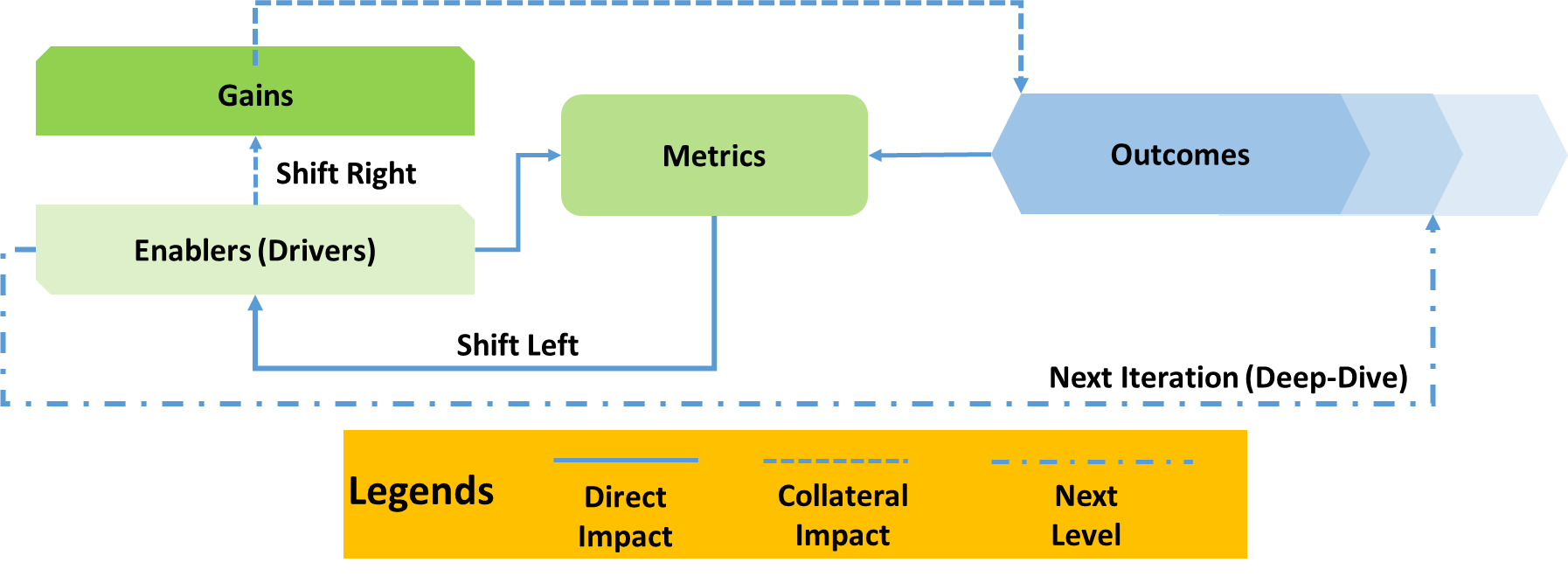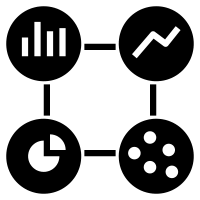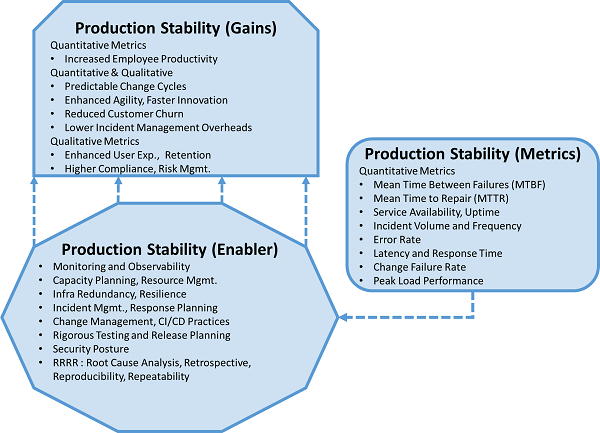Ijraset Journal For Research in Applied Science and Engineering Technology
- Home / Ijraset
- On This Page
- Introduction
- Copyright
GOOD: Governance by Outcome-Oriented Delivery Framework
Authors: Tarash Budhrani
DOI Link: https://doi.org/10.22214/ijraset.2024.65269
Certificate: View Certificate
Abstract
Introduction
I. DRIFTING OUTCOME SYNDROME OF IT TRANSFORMATION PROJECTS
IT transformation projects are naturally exploratory, often starting with specific goals but expanding in scope and complexity over time. This evolution introduces risks that, if not carefully managed, can lead to deviations from the original objectives. To manage outcome drift, teams must ensure that each capability developed aligns with intended goals, incorporating metrics-driven checkpoints and regular feedback loops throughout the project. However, a key challenge is that the link—or "forward lineage"—between these capabilities and broader business objectives is often unclear due to the dynamic nature of transformation efforts. As a result, a purely KPI-focused approach within a standard project framework may not be enough to prevent drift; instead, more flexible and adaptive methods are needed to keep projects aligned with their intended outcomes.

A. GOOD is nothing but reverse linage on the outcome defined for the project
The Governance by Outcome-Oriented Development (GOOD) framework introduces a structured, outcome-driven approach to managing IT transformation projects by emphasizing reverse lineage—a method that begins with the end goals and works backward to ensure alignment throughout the project lifecycle. In reverse lineage, outcomes are defined first, and from these, the essential metrics and drivers are identified, forming a clear pathway from objectives to execution. This approach enables IT teams to evaluate each project component against targeted outcomes, maintaining alignment with strategic goals from the start.

The GOOD framework's goal-centric model begins by setting precise outcomes and establishing metrics as checkpoints to monitor the drivers that influence those outcomes. By creating this layered connection between outcomes, metrics, and drivers, the framework ensures that development efforts consistently reflect the intended objectives. Each metric serves as a guidepost, while drivers are adjusted to prioritize features and capabilities that directly enhance the project's impact. The framework enforces the execution team to identify the right enablers to achieve the target state as per metrics. Once the enablers (drivers) are identified then the next iteration starts with each enabler becoming an outcome to deep-dive through the framework. As we start implementing the drivers (enablers) at a given level, the outcome assessment will get easier as the metrics linked with the drivers can be measured easily. However, with each implementation of the driver, we can start seeing collateral benefits as well. These gains will add to the outcomes (achievements) and in turn improve the returns-on-investments derived from the GOOD: Governance by Outcome Oriented Delivery Framework.

II. POINT-IN-CASE: ACHIEVING GOOD ON PRODUCTION STABILITY
To illustrate the application of the GOOD framework, let us examine Production Stability as an outcome. This is an ideal example because Production Stability is rarely quantified by business metrics alone and is often evaluated through multiple perspectives. By selecting this outcome, we can demonstrate how the GOOD approach can provide structure and clarity to outcomes that are otherwise assessed qualitatively.

A. First, let us Define the Outcome
Production Stability refers to an IT organization’s ability to maintain consistent, reliable operation in production environments, minimizing incidents, downtime, and operational disruptions. It reflects how well systems, applications, and services perform without unexpected interruptions, ensuring high availability and quality user experience.
1) Stage 01: Measure it to Control it
As stated by management expert Peter Ducker, if you cannot measure, you cannot control it. Let us define the metrics, which indicates, quantitatively, the goal (or KPI) achieved.
-
- Mean Time Between Failures (MTBF): Measures the average time between system failures, indicating reliability.
- Mean Time to Repair (MTTR): Calculates the average time taken to recover from incidents, a core indicator of resilience.
- Service Availability: Percentage of time services are operational, indicating uptime and reliability.
- Incident Volume and Frequency: Number of incidents over a given period, showing the frequency of stability-impacting events.
- Error Rate: Tracks the percentage of requests or transactions resulting in errors, providing insight into stability under load.
- Latency and Response Time: Measures system response under load, helping gauge the impact of latency on the user experience.
- Change Failure Rate: The frequency of failed changes deployed to production, indicating the stability of new updates.
- Peak Load Performance: System performance during peak load times, crucial for understanding stability under high demand.
- User Satisfaction (Post-Incident): User satisfaction scores following incidents, gauging perceived impact and response effectiveness.
These metrics are for the illustration purpose. The organisation will choose different metrics based on the domain and its operating context.
Establishing a Baseline for Production Stability Metrics
To set a foundation for Production Stability, organizations first need to assess the current (As-Is) state of relevant metrics. Target values for these metrics will vary depending on the criticality of business operations—what is acceptable for a supply chain management system may be insufficient for high-stakes environments like UPI platforms, trade booking systems, or air traffic control systems. The project team must ensure metrics are measured optimally and trend analysis is conducted effectively. ITSM tools generally provide many of these metrics, but organizations can also build custom solutions using business intelligence tools like Power BI to create specialized dashboards that go beyond the capabilities of standard ITSM tools.

Viewing Production Stability as a composite of various metrics, organizations can develop a model that links each metric to the overall outcome. This model will help prioritize metrics, revealing their relative importance and correlation to Production Stability. Additionally, the transformation project team can simulate different scenarios to test hypotheses, gaining insights into how individual metrics influence the outcome measure. This approach will allow the team to recommend optimal adjustments to specific metrics, driving improvements in overall production stability.

2) Stage 02: Shift Left << Identify the drivers linked to metrics
Once the key metrics for assessing production stability have been identified, the next step is to pinpoint the drivers that can positively influence these metrics. This approach, a "Shift Left" in reverse lineage, involves identifying specific changes or enablers that directly correlate with one or more metrics, guiding them toward desired improvements. By working backward from the metrics, we uncover the drivers that will ultimately enhance production stability. Each driver selected should have a clear, measurable impact on the metrics, thereby ensuring that efforts are targeted effectively to achieve the overall stability outcome.
a) Capacity Planning and Resource Management: involves forecasting, managing, and aligning IT infrastructure resources—such as CPU, memory, storage, and bandwidth—to meet present and future workload demands. Effective capacity planning ensures that resources are available during peak times without over-provisioning, which can lead to increased costs, or under-provisioning, which may result in system slowdowns or outages. This proactive approach involves analyzing historical data, predicting growth trends, and implementing flexible, automated strategies to maintain optimal performance levels.

- Monitoring and Observability: Observability is the capability of an IT system to allow administrators and engineers to gain insights into its internal states by collecting and analyzing data from logs, metrics, and traces. With effective observability, teams can proactively detect and troubleshoot issues, enhancing system reliability and stability.
- Incident Management and Response Planning: Incident management and response planning involve structured processes for identifying, managing, and mitigating incidents that disrupt normal operations. This includes preparation, detection, response, and post-incident review to enhance future readiness.
- Infrastructure Redundancy and Resilience: Infra redundancy and resiliency refer to the proactive measures and strategies implemented to ensure that IT infrastructure remains functional and available, even in the event of failures. This involves creating
- Change Management, CI/CD Practices: Change Management involves the structured approach to transitioning individuals, teams, and organizations from a current state to a desired future state regarding processes, systems, or technologies. Continuous Integration/Continuous Deployment (CI/CD) practices streamline software development, enabling rapid and reliable delivery of changes to production.
- Improving Security posture refers to an organization's overall cybersecurity strength, encompassing policies, controls, processes, and measures taken to protect production systems from threats. A strong security posture is essential for maintaining production stability, as it prevents disruptions caused by security incidents and ensures compliance with regulatory standards.
- Rigorous testing and release planning are essential for ensuring that software releases are reliable and meet user expectations. By systematically addressing quality through diverse testing methodologies and strategic release management, organizations can enhance production stability and minimize operational risks.
- Root Cause Analysis (RCA), Knowledge Sharing, and Retrospectives are integral to identifying the underlying causes of incidents, sharing insights across teams, and continually improving processes. When executed consistently, these practices prevent recurring issues, foster a culture of transparency, and strengthen organizational resilience.
- Repeatability, Reproducibility, Recoverability RRR focuses on creating resilient, consistent, and duplicable processes to ensure production stability. By focusing on these elements, organizations can quickly recover from disruptions, maintain consistent execution of processes, and replicate results across environments to enhance reliability and reduce variance.
The GOOD framework advocates a Shift Left approach, where key enablers are embedded early in the project lifecycle to drive outcome alignment from the outset. Metrics and enablers should be reviewed proactively to ensure they are designed and operationalized at the right project phase, thereby maximizing the benefits of streamlining efforts. In this context, drivers include processes that need to be established or refined, as well as capabilities to be developed.
At Level I of the framework, foundational drivers are defined and aligned with high-level outcomes. Moving to Level II, the approach iterates on these drivers, treating each Level I driver as an outcome in its own right. This involves a full definition of specific metrics and additional drivers for each Level I driver, creating a structured progression that reinforces alignment with strategic goals through multiple iterations.
3) Stage 03: Shift Right >> Track the Benefits and Outcomes of Achieving Outcome
By implementing or adopting these enablers, we will get a clear handle on the outcome – Production Stability. However, we should start looking at the gains of improving or achieving the outcome as well. This is what we call as Shift Right approach. The benefits of achieving the production stability are given below. Often, the IT team misses out capturing them and hence the real returns are not captured as a result the ROI equation is not that appealing. The framework recommends to have a metric baseline for the gains as well.
- Improved User Experience and Retention
- Consistent Performance: Stable production environments improve the user experience, as users encounter fewer errors or disruptions, leading to increased satisfaction and loyalty.
- Increased Employee Productivity: Teams are less interrupted by system issues, allowing them to stay focused on value-driven tasks.
- Reduced Customer Churn: Stability minimizes interruptions and unexpected downtime, which directly impacts user retention and reduces churn rates.
- Operational Efficiency and Reduced Incident Costs
- Lower Incident Management Overheads: Reducing incident frequency through stability efforts cuts down on time and resources spent in incident response and recovery, allowing teams to focus on strategic work.
- Cost Savings: With fewer disruptions and need for emergency response, operational costs decrease, particularly costs associated with service-level agreement (SLA) penalties and refunds due to downtime.
- Enhanced Agility and Faster Innovation
- Predictable Change Cycles: Stable environments allow for more predictable and efficient change cycles, enabling development teams to focus on innovation without impacting operational stability.
- Efficient Rollouts of New Features: A reliable production environment provides a foundation for continuous innovation and faster feature rollouts without compromising service reliability.
- Risk Mitigation and Compliance
- Regulatory Compliance: Stability and uptime are often key compliance requirements, and consistently stable environments ensure adherence to regulatory SLAs, particularly for industries like finance and healthcare.
- Strengthened Organizational Resilience: Stability initiatives that focus on fault tolerance and resilience lead to stronger overall risk mitigation. The organization becomes more resilient to disruptions, bolstering continuity and disaster recovery capabilities.
- Enhanced Stakeholder Trust and Brand Reputation
- Customer Trust: A consistent record of accomplishment of production stability builds customer trust and brand reputation, fostering long-term relationships.
- Stakeholder Confidence: Reliable production systems assure stakeholders of the organization’s operational maturity, inspiring confidence in its ability to scale and innovate without sacrificing stability.
III. SUMMARY
The Governance by Outcome-Oriented Development (GOOD) Framework provides a structured approach for IT projects to align closely with business objectives, ensuring that each phase of development drives toward measurable outcomes. By focusing on outcome-based governance, the framework helps organizations define clear success metrics from the outset, create transparency across teams, and maintain alignment throughout the project lifecycle. Integrating continuous feedback, iterative checkpoints, and data-driven performance monitoring, the GOOD Framework minimizes the risk of scope drift and operational misalignment. Ultimately, this approach not only enhances project accountability but also ensures that both Build and Run dimensions contribute meaningfully to business value, fostering a sustainable and resilient IT environment aligned with long-term organizational goals.

Copyright
Copyright © 2024 Tarash Budhrani. This is an open access article distributed under the Creative Commons Attribution License, which permits unrestricted use, distribution, and reproduction in any medium, provided the original work is properly cited.

Download Paper
Paper Id : IJRASET65269
Publish Date : 2024-11-14
ISSN : 2321-9653
Publisher Name : IJRASET
DOI Link : Click Here
 Submit Paper Online
Submit Paper Online

